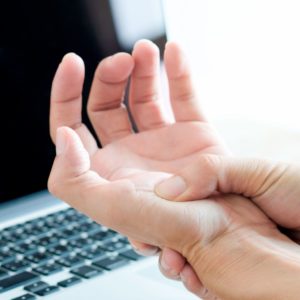Physical Therapy Lattingtown NY
What Is a Shoulder Sprain?

What Can I Do To Help My Injury?
There are multiple exercises that an individual with a shoulder sprain can perform in order for them to get back into shape and restore their range of motion quickly after an injury like this.
- One such exercise is called towel scapular retraction and can be performed with a towel and weights. This will allow you to begin performing scapular retraction exercises with minimal resistance at first, which is important for those who have just had an injury like this.
- Another good exercise is towel scapular retraction with cross-body arm motion. This one will help increase strength in both your back and shoulders, which is great for someone who has had a shoulder sprain because it helps to restore the overall function of the shoulder girdle or scapula region.
Doing these exercises will help your shoulder feel more comfortable while you recover from a shoulder sprain. It can allow for proper recovery of the tissue in the area. If you cannot perform these exercises without experiencing too much pain, or if the pain is too intense and lasts for more than a couple of days (especially if you cannot lift your arm), please seek medical help immediately.
Within Normal Limits Physical Therapy Lattingtown NY
A shoulder sprain is a common injury in sports. This can happen when a person falls or experiences a direct hit to the area. If you have had a shoulder sprain before, you probably know how painful it can be. However, there are things that you can do in order to help with your pain. It starts with begin strengthening the muscles in your back and shoulder again. This can help with restoring range of motion. It can help your body recover from the trauma it has experienced with a shoulder sprain. Contact Within Normal Limits Physical Therapy Lattingtown NY today!
What Is The Main Cause Of Piriformis Syndrome?

The most common cause of piriformis syndrome is having an imbalance between two groups of muscles in your buttocks: the gluteal muscles and the hamstring muscles. The gluteal muscles, which include the large buttock muscle, are called the gluteus maximus. Also, three smaller muscles make up the buttocks (the gluteus medius, minimus, and piriformis), work to extend, abduct (move your leg away from its midline), rotate, and stabilize your leg hips. If your gluteal muscles are more robust than your hamstring muscles, the piriformis muscle can spasm. It’s best to try and stabilize your hip out of a sense that you need extra support. The pressure from the spasming muscle can then pinch or rub on a tendon that runs under it, creating pain. Visit physical therapy lattingtown ny!
Exercises For Piriformis Syndrome
The most effective way to treat the syndrome is to stretch the piriformis muscle and strengthen your gluteal muscles.
- You can do this with at-home exercises, including hip abduction. This is in which you lie on your side and raise the leg closest to the ceiling without rotating at the waist.
- Another example is lying face down on a foam roller. You place under your pelvis at the hip and roll slowly from side to side, finding painful spots and holding them for several seconds.
Within Normal Limits – Physical Therapy Lattingtown NY
In conclusion, the leading cause of piriformis syndrome is having an imbalance between two groups of muscles in your buttocks. These muscles are the gluteal muscles and the hamstring muscles. The most effective way to treat the syndrome is to stretch the piriformis muscle and strengthen your gluteal muscles. There are a few easy exercises you can do at home to help heal this issue. If you’re looking for physical therapy lattingtown ny, contact Within Normal Limits PT today!
What is Trigger Finger?

Did you know that trigger finger is one of the most common causes of clicking, pain, or tenderness in hand? It is more common in women than men and can affect any age group, including children. It is possible to experience a trigger finger simultaneously at more than one joint, although this is rare. Triggering often occurs first thing in the morning after waking; or when trying to use the hand after inactivity. The exact cause of trigger finger is currently unknown. Still, it may be linked with repetitive strain injury, which can occur if someone grips something firmly for extended periods. Occupations involving vibrating tools are at risk, especially those involving assembly line work or certain machinery. Carpenters, builders, and musicians may also be susceptible, as can people who perform many keyboard work daily.
Exercises For Trigger Finger?
Exercises for trigger finger are possible to perform at home, significantly if the condition has not progressed too far. Tools such as a simple can of soup can help stretch out the tendon and reduce triggering overtime. Many people find that kneading or stretching the hand helps limit triggering even further. Also, this is an effective way of reducing the symptoms of trigger finger, which allows the affected digit to become more flexible and workable again.
Within Normal Limits Physical Therapy Lattingtown NY
A trigger finger is a condition that affects the tendons in a person’s hand, usually as a result of repetitive strain injury. There are specific exercises for trigger finger that can be performed at home to help reduce triggering and stiffness. It is vital not to ignore this problem as both hands are used regularly throughout the day, so trigger finger will ultimately restrict daily life if allowed to worsen. Visit Physical Therapy Lattingtown NY today too see how we can help with your injury today! Click here to learn more.
Directions From Lattingtown, NY To Our Locust Valley Location!


